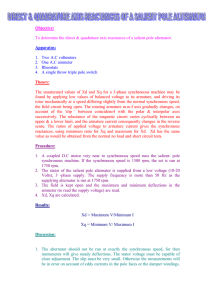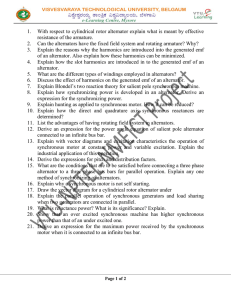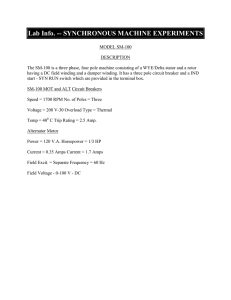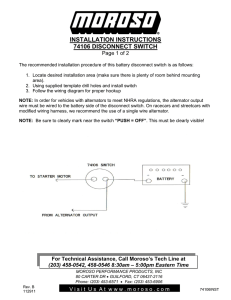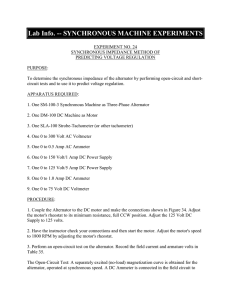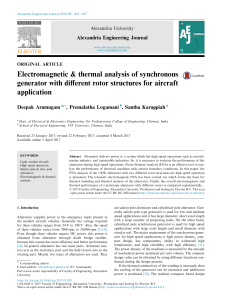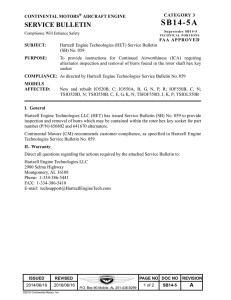Document
advertisement
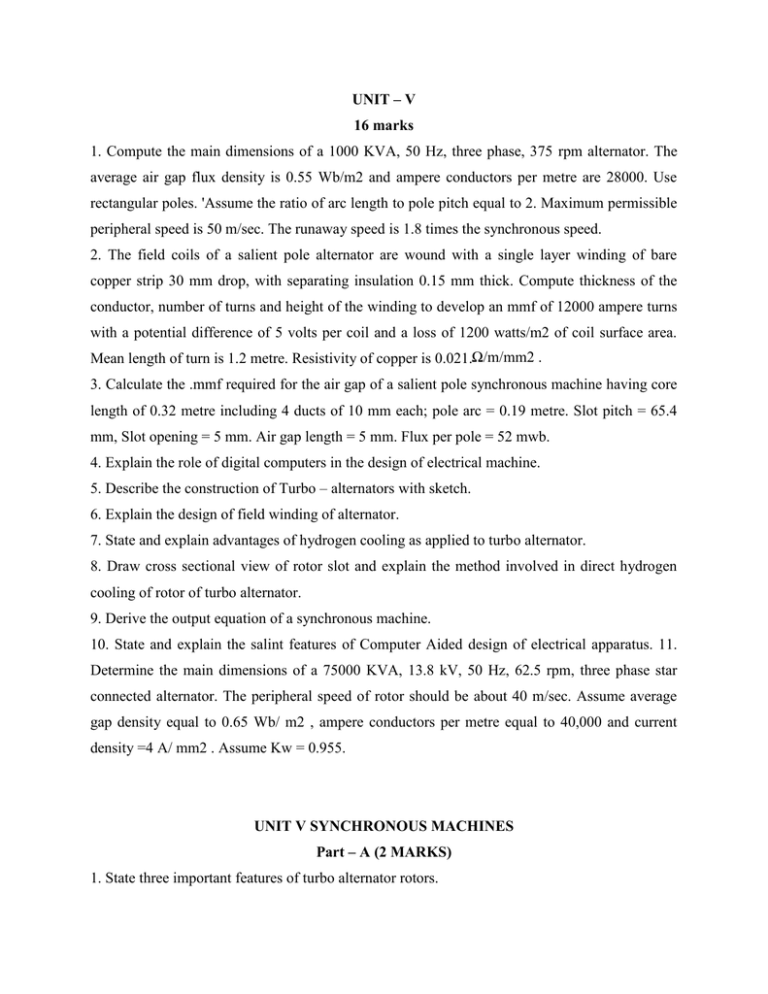
UNIT – V 16 marks 1. Compute the main dimensions of a 1000 KVA, 50 Hz, three phase, 375 rpm alternator. The average air gap flux density is 0.55 Wb/m2 and ampere conductors per metre are 28000. Use rectangular poles. 'Assume the ratio of arc length to pole pitch equal to 2. Maximum permissible peripheral speed is 50 m/sec. The runaway speed is 1.8 times the synchronous speed. 2. The field coils of a salient pole alternator are wound with a single layer winding of bare copper strip 30 mm drop, with separating insulation 0.15 mm thick. Compute thickness of the conductor, number of turns and height of the winding to develop an mmf of 12000 ampere turns with a potential difference of 5 volts per coil and a loss of 1200 watts/m2 of coil surface area. Mean length of turn is 1.2 metre. Resistivity of copper is 0.021.Ω/m/mm2 . 3. Calculate the .mmf required for the air gap of a salient pole synchronous machine having core length of 0.32 metre including 4 ducts of 10 mm each; pole arc = 0.19 metre. Slot pitch = 65.4 mm, Slot opening = 5 mm. Air gap length = 5 mm. Flux per pole = 52 mwb. 4. Explain the role of digital computers in the design of electrical machine. 5. Describe the construction of Turbo – alternators with sketch. 6. Explain the design of field winding of alternator. 7. State and explain advantages of hydrogen cooling as applied to turbo alternator. 8. Draw cross sectional view of rotor slot and explain the method involved in direct hydrogen cooling of rotor of turbo alternator. 9. Derive the output equation of a synchronous machine. 10. State and explain the salint features of Computer Aided design of electrical apparatus. 11. Determine the main dimensions of a 75000 KVA, 13.8 kV, 50 Hz, 62.5 rpm, three phase star connected alternator. The peripheral speed of rotor should be about 40 m/sec. Assume average gap density equal to 0.65 Wb/ m2 , ampere conductors per metre equal to 40,000 and current density =4 A/ mm2 . Assume Kw = 0.955. UNIT V SYNCHRONOUS MACHINES Part – A (2 MARKS) 1. State three important features of turbo alternator rotors. 2. Why salient pole construction is rejected for high speed alternators. 3. What material user for the construction of turbo alternator rotor. 4. What is run-away speed? 5. What is approximately the run away speed of Kaplan turbine. 6. Write the expression for the output coefficient of synchronous machine. 7. What are the advantages of designing the alternators with higher flux density?. 8. What are the disadvantages of designing the alternators with higher gap flux density? 9. Why semi- closed slots are generally preferred for the stator of induction motors. 10. What is the effect of specific magnetic loading on the size of the machine? 11. What is the effect of specific electric loading on t he copper losses? 12. Write down the main consideration in the selection of specific loadings for the design of induction motor. 13. What is critical speed of alternator? 14. What are the functions of damper winding? 15. What is Short Circuit Ratio (SCR)? 16 What is the effect of SCR on synchronous machine performance? 17. Why it is necessary to cool an electrical machine? 18. What is limiting factor for the diameter of synchronous machine? 19. Discuss how ventilation and cooling of a large high speed alternator is carried out. 20. Mention the factors to be considered for the design of field system in alternator.
